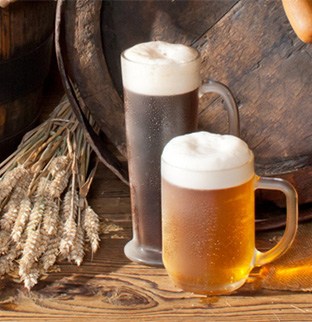Making beer is a complex art. Each process involved needs to be executed precisely for the final product to be of high quality.
One of these processes is the wort cooling. This stage comes after wort boiling and just before fermentation, which is when the yeast is added to produce alcohol. This sometimes overlooked step is important for several reasons, according to Brew Your Own, a magazine dedicated to home brewing.
Importance of wort cooling
Cooling the wort brings the liquid down to a temperature at which the yeast will function best. Ale yeasts flourish in temperatures between 68 and 72 degrees, while lager yeasts prefer temperatures between 45 and 57 degrees. This is a far cry from the high temperatures the wort boils at. According to Beer & Wine Journal, wort boils at above 212 degrees – the exact temperature depends on the liquid’s specific gravity.
Production of dimethyl sulfide is slowed when the wort is cooled. While DMS is intentionally left in some commercial beers, many beer makers want to eliminate its presence from their brew. It has a tendency to smell like cooked corn.
“Dimethyl sulfide production is slowed at cooler temperatures.”
Sometimes wort contains contaminants that affect the taste of the final product. Brewers want to be sure they have bacteria in their wort under control and rapid cooling helps slow any growth. Bacteria can’t reproduce well in high or low temperatures, but once the wort cools below 160 degrees, it flourishes. This is why it’s important to cool it as quickly as possible, to reduce the amount of time the fluid spends in this zone.
Finally, rapidly cooling the wort will maximize the cold break. According to Brew Like a Pro, the cold break occurs when proteins, tannins and other materials solidify in the wort. The quicker the wort is cooled, the more cold break will form. By increasing the amount that solidify, fewer will be transferred to the the final product. Their presence can make the beer cloudy and affect the taste.
How to cool wort
There are several ways to cool wort after it’s been boiled, though some are only efficient for small quantities. For instance, an ice bath might work for a home brewer, but would never be used in a craft or commercial beer setting. A shell and tube heat exchanger, sometimes called a counterflow chiller in the craft beer industry, is widely considered an efficient method for wort cooling.
The benefit of using a shell and tube heat exchanger rather than other options is how quickly the wort will be cooled. The exchanger can have the wort down to the desired temperature in 10 minutes, according to Craft Beer & Brewing. This is ideal for several reasons. The quicker you can cool the wort, the quicker you can add the yeast and the sooner your brew will be ready. Also, by minimizing the time it takes to cool, DMS will have less time to produce and bacteria won’t be able to multiply as well.
Comsol pointed out that this method is also an efficient one because the heated water can then be used for the next batch of wort.
“Maximizing the cold break will make a clearer beer.”
The cold break will still be in the wort when it goes through the shell and tube heat exchanger. Brewers will be able to clearly see this when the wort that leaves the exchanger is cloudy. The solution to this is to direct the exchanger’s exit to a sanitary vessel and let the cold break settle at the bottom. After this, transfer the liquid to the fermenter and add the yeast.
Keeping all equipment clean is crucial to craft, commercial and home brewers alike. Fouling can be detrimental to a batch of beer and to a company that sells tainted product. Because of this, brewers must do everything they can to prevent contamination. All equipment should be cleaned properly after use. The shell and tube heat exchanger should be examined periodically to detect any leaks or deformities. Stainless steel shell and tube heat exchangers are easy to clean and more resistant to fouling. To get a quote on an exchanger for your brewing practice, contact Enerquip.

